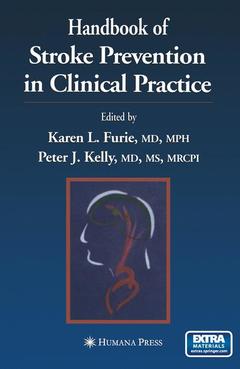Handbook of Stroke Prevention in Clinical Practice, 2004 Current Clinical Neurology Series
Langue : Anglais
Coordonnateurs : Furie Karen L., Kelly Peter J.

Despite major advances in the understanding of stroke mechanisms that have occurred over the past quarter century, stroke continues to rank among the leading causes of death and disability worldwide. Although currently it may be difficult to believe, early doubts were expressed as to whether inter ventions in risk factors for either coronary disease or stroke would actually lead to a reduction in the incidence of these disorders. However, large clini cal trials in hypertension, carotid disease, atrial fibrillation, and antithrombotic and antiplatelet therapies have effectively demonstrated the efficacy of these targeted interventions in reducing stroke incidence. More recently, after earlier uncertainty regarding the role of elevated lipids as a risk factor for stroke, clinical trials of the statins have also demonstrated a significant reduction in the incidence of ischemic stroke. However, as em phasized in Handbook of Stroke Prevention in Clinical Practice, despite these gains and the initial decline in stroke incidence that did occur in the 1960s and 1970s, the incidence of stroke disappointingly has failed to show a fur ther significant decline since that time. The editors of Handbook of Stroke Prevention in Clinical Practice raise the very important question of whether recognized strategies for stroke preven tion have been widely or effectively implemented. They correctly empha size the critical importance of identifying the mechanism of stroke in each patient so as to properly direct prevention and treatment. As Dr.
1 Epidemiology of Stroke.- 2 Subtypes of Ischemic Stroke.- 3 Hypertension As a Risk Factor for Stroke: Epidemiology of Blood Pressure Risks and Evidence for Treatment Benefit.- 4 Evaluation and Management of Hyperlipidemia for Stroke Prevention.- 5 Diabetes.- 6 Tobacco and Alcohol.- 7 Diet, Obesity, and Physical Activity.- 8 Stroke Prevention With Antiplatelet Therapy.- 9 Hormonal Therapy.- 10 Stroke Due to Large Artery Atherosclerosis.- 11 Craniocervical Endovascular Stenting and Angioplasty.- 12 Cardiac Embolism.- 13 Cryptogenic Emboli and Other Elusive Causes of Stroke.- 14 Less Common Causes of Ischemic Stroke.- 15 Perioperative Stroke Risk Assessment and Management.- 16 Serum Biomarkers in Prediction of Stroke Risk and Outcome.- 17 Genetic Susceptibility and Early Stratification of Stroke Risk.
Includes supplementary material: sn.pub/extras
Date de parution : 07-2012
Ouvrage de 310 p.
15.2x22.9 cm
Date de parution : 04-2004
Ouvrage de 310 p.
15.5x23.5 cm
Thème de Handbook of Stroke Prevention in Clinical Practice :
Mots-clés :
Stent; atherosclerosis; blood pressure; embolism; hypertension; stroke
© 2024 LAVOISIER S.A.S.



